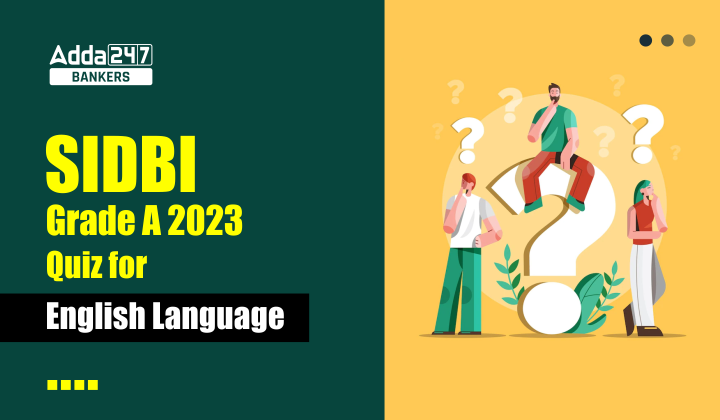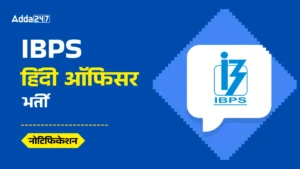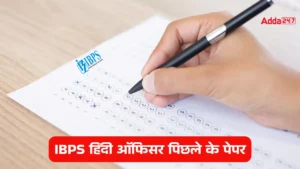Directions (1-8): In the following questions two columns are given containing three sentences/phrases each. In first column, sentences/phrases are A, B, and C and in the second column, the sentences/phrases are D, E and F. A sentence/phrase from the first column may or may not connect with another sentence/phrase from the second column to make a grammatically and contextually correct sentence. Each question has five options, four of which display the sequence(s) in which the sentences/phrases can be joined to form a grammatically and contextually correct sentence. If none of the options given forms a correct sentence after combination, mark (e), i.e. “None of these” as your answer.
Q1.
Column (1):
(A) Petrochemicals is another area that
(B) Russia envisions potential threats to
(C) The recent appointment of five Governors by the
Column (2):
(D) American companies have looking at
(E) The current balance of power in Eurasia
(F) President must be viewed with grave skepticism
(a) C-F and B-E
(b) A-F
(c) B-E
(d) A-E
(e) None of these
Q2.
Column (1):
(A) This reignites the debate around the office of
(B) Decriminalization is the first step towards recognized
(C) The rights of equality and non-discrimination on the
Column (2):
(D) Of equal rights, but the two cannot be conflated.
(E) Ground of sexual orientation has not covering under this Bill.
(F) The Governor, its appointments and processes involved.
(a) C-F and B-E
(b) A-F
(c) B-E
(d) A-E
(e) None of these
Q3.
Column (1):
(A) A challenge to Section 377 of the Indian Penal Code
(B) ISRO only needs to explain its setbacks, not hide them
(C) While that may be a dated quote
Column (2):
(D) He was hiding in the horizon
(E) With the cellophane of national pride
(F) The operation had been an emotional experience for us
(a) C-F and B-E
(b) A-F
(c) B-E
(d) A-E
(e) None of these
Q4.
Column (1):
(A) While he is the king of clay and quite adept on
(B) The need of the hour calls not only
(C) Judges of the High Court are as much constitutional
Column (2):
(D)For statesmanship demands, it is required courage
(E) Grass, the acrylic has often been his bane
(F)Functions of judges of the Supreme Court
(a) C-F and B-E
(b) A-F
(c) B-D
(d) A-E
(e) None of these
Q5.
Column (1):
(A) This is not only a case of humiliation but amounts to
(B) Keeping with her high dignity, the judge even
(C) Many questions arise in the wake of this decision
Column (2):
(D) It disgraced a person in public life
(E) Here fused to go to the press on this issue
(F) Were collegium there are absolutely no answers
(a) C-F and B-E
(b) A-F
(c) B-D
(d) A-E
(e) None of these
Q6.
Column (1):
(A) The accumulated impacted of the NRC on the
(B) For those excluded, the appeal period only brings
(C) Climate change is a global problem, and
Column (2):
(D) Psyche of the vulnerable had be superiority
(E) The mere possibility, not certainty, of inclusion
(F) A global problem needs a global solution
(a) C-F and B-E
(b) A-F
(c) B-D
(d) A-E
(e) None of these
Q7.
Column (1):
(A) Some impact of this was already felt
(B) The total amount of “carbon compensation” made by
(C) These are hugely contentious times for
Column (2):
(D) India’s criminal justice system have been biased
(E) They pay around $570 billion with great margins
(F) During the Tamil Nadu water crisis this year
(a) C-F and B-E
(b) A-F
(c) B-D
(d) A-E
(e) None of these
Q8.
Column (1):
(A) In their perception, the prosecution team is
(B) There is also controversy over the need for
(C) Police custody casts a serious
Column (2):
(D) It is requiring interrogation of an accused person
(E) Somehow trying to fix the accused
(F) This was responsibility on the investigating officer
(a) C-F and B-E
(b) A-F
(c) B-D
(d) A-E
(e) None of these
Directions (9-15): Read the following passage carefully and answer the questions given below it. Certain words are given in bold to help you locate them while answering some of the questions.
The Supreme Court order quashing a circular issued by the RBI on resolution of bad loans is a setback to the evolving process for debt resolution. The voiding of the February 12, 2018 circular could slow down and complicate the resolution process for loans aggregating to as much as 3.80 lakh crore across 70 large borrowers, according to data from the ratings agency ICRA. The circular had forced banks to recognise defaults by large borrowers with dues of over 2,000 crore within a day after an instalment fell due; and if not resolved within six months after that, they had no choice but to refer these accounts for resolution under the Insolvency and Bankruptcy Code.
Mounting bad loans, which crossed 10% of all advances at that point, and the failure of existing schemes such as corporate debt restructuring, stressed asset resolution and the Scheme for Sustainable Structuring of Stressed Assets (S4A) to make a dent in resolving them formed the backdrop to this directive. The circular was aimed at breaking the nexus between banks and defaulters, both of whom were content to evergreen loans under available schemes. It introduced a certain credit discipline — banks had to recognise defaults immediately and attempt resolution within a six-month timeframe, while borrowers risked being dragged into the insolvency process and losing control of their enterprises if they did not regularise their accounts. RBI data prove the circular had begun to impact resolution positively.
It is this credit discipline that risks being compromised now. It is not surprising that international ratings agency Moody’s has termed the development as “credit negative” for banks. It is true that the circular failed to take into account the peculiarities of specific industries or borrowers and came up with a one-size-fits-all approach. It is also true that not all borrowers were deliberate defaulters, and sectors such as power were laid low by externalities beyond the control of borrowers. The RBI could have addressed these concerns when banks and borrowers from these sectors brought these issues to its notice. By taking a hard line and refusing to heed representations, the RBI may only have harmed its own well-intentioned move.
That said, it is now important for the central bank to ensure that the discipline in the system does not slacken. The bond market does not allow any leeway to borrowers in repayment, and there is no reason why bank loans should be any different. The RBI should study the judgment closely, and quickly reframe its guidelines so that they are within the framework of the powers available to it under the law. Else, the good work done in debt resolution in the last one year will be undone.
Q9. What are the suggestions given in the passage above so that the “good work done in debt resolution is not undone”?
(i) RBI must stick to its guidelines issued under the debt resolution circular
(ii) RBI should ensure that the credit discipline system strengthens
(iii) The banks should not allow any leeway to borrowers in repayment of loans
(a) Only (i)
(b) Both (ii) and (iii)
(c) Both (i) and (iii)
(d) Both (i) and (ii)
(e) All (i), (ii) and (iii)
Q10. According to passage given above, what were the orders for the banks mentioned in the circular issued by RBI for debt resolution?
(i) to recognise defaults by large borrowers with dues of over ₹2,000 crore within a day after an instalment fell due
(ii) resolve the debt within 6 months of identification
(iii) refer the unpaid debts to Insolvency and Bankruptcy Board if they are not resolved within 6 months of identification
(a) Only (i)
(b) Only (ii)
(c) Only (iii)
(d) Both (i) and (iii)
(e) All (i), (ii) and (iii)
Q11. What was/ were the backdrop of the debt resolution process as suggested by RBI for banks in its circular?
(a) Schemes like corporate debt restructuring ans stressed asset resolution had failed
(b) Bad loans crossed 10% of all the advances at the point when the circular was issued.
(c) Scheme for Sustainable Structuring of Stressed Assets (S4A) made a dent in the resolution process
(d) Both (i) and (ii)
(e) All of the above
Q12. Which of the following statements is/ are incorrect as per the information given in the passage above?
(a) The debt resolution circular aimed at breaking the nexus between banks and defaulters
(b) Moody’s termed the development as “credit negative” for banks
(c) Circular failed to take into account the peculiarities of specific industries or borrowers
(d) Supreme court validated the circular issued by RBI for debt resolution issued in February, 2018.
(e) All are correct
Q13. Why did the writer state “RBI may only have harmed its own well-intentioned move”?
(a) RBI came up with a one-size-fits-all approach which failed to take into account the peculiarities
(b) Not all borrowers were deliberate defaulters, and sectors such as power were laid low by externalities beyond the control of borrowers
(c) RBI heeded to representations and did not address the concerns bought to its notice
(d) Both (a) and (b)
(e) All of the above
Q14. Choose the word that expresses the most similar meaning to the word “RESOLUTION” given in bold in the passage.
(a) vacillation
(b) rectification
(c) swither
(d) havering
(e) fluctuation
Q15. Choose the word that is opposite of the word “INTRODUCED” given in bold in the passage.
(a) ventilate
(b) initiate
(c) instigate
(d) expunge
(e) reinforce
Solutions
S1. Ans. (a)
Sol. Here, out of the given options, only C-F and B-E form contextually meaningful and grammatically correct sentences. The sentences thus formed are:
(i) Russia envisions potential threats to the current balance of power in Eurasia.
(ii) The recent appointment of five Governors by the President must be viewed with grave skepticism.
S2. Ans. (b)
Sol. Here, only A-F frame a contextually meaningful and grammatically correct sentence. Rest of the options are grammatically incorrect. The sentence thus formed is,
(i) This reignites the debate around the office of the Governor, its appointments and processes involved.
S3. Ans. (c)
Sol. Here, only B-E can form a contextually meaningful and grammatically correct sentence. The rest of the options are neither grammatically nor contextually fit to form a sentence. The sentence thus formed is,
(i) ISRO only need to explain its setbacks, not hide them with the cell phone of national pride.
S4. Ans. (d)
Sol. Here, only A-E are suitable to form a contextually meaningful and grammatically correct sentence. The sentence thus formed is, “While he is the king of clay and quite adept on grass, the acrylic has often been his bane. “
S5. Ans. (e)
Sol. The right answer choice is option (e). There are no suitable options as given as above in order to form a contextually meaningful and grammatically sentence.
S6. Ans. (a)
Sol. Here, only C-F and B-E form contextually meaningful and grammatically correct sentence. The sentences thus formed are,
(i) For those excluded, the appeal period only brings the mere possibility, not certainty, of inclusion.
(ii) Climate change is a global problem, and a global problem needs a global solution.
S7. Ans. (b)
Sol. Here, only A-F form a contextually meaningful and grammatically correct sentence. The sentence thus formed is, “Some impact of this was already felt during the Tamil Nadu water crisis this year. “
S8. Ans. (d)
Sol. Here, only A-E is suitable to form a contextually meaningful and grammatically correct sentence. The sentence thus formed is, “In their perception, the prosecution team is somehow trying to fix the accused. “
S9. Ans. (b)
Sol. Refer to the last paragraph of the passage given above which states, “central bank to ensure that the discipline in the system does not slacken. The bond market does not allow any leeway to borrowers in repayment, and there is no reason why bank loans should be any different. The RBI should study the judgment closely, and quickly reframe its guidelines so that they are within the framework of the powers available to it under the law. Else, the good work done in debt resolution in the last one year will be undone.” Therefore, we can conclude that statements (ii) and (iii) are correct as per the passage given above whereas statement (i) is incorrect. Hence, option (b) is the most suitable answer choice.
S10. Ans. (e)
Sol. Refer to the first paragraph of the passage given above which states, “The circular had forced banks to recognise defaults by large borrowers with dues of over ₹2,000 crore within a day after an instalment fell due; and if not resolved within six months after that, they had no choice but to refer these accounts for resolution under the Insolvency and Bankruptcy Code.” Therefore, we can conclude that all three statements (i), (ii) and (iii) are correct as per the information given in passage above. Hence, option (e) is the correct answer choice.
S11. Ans. (d)
Sol. Refer to the second paragraph which mentions, “Mounting bad loans, which crossed 10% of all advances at that point, and the failure of existing schemes such as corporate debt restructuring, stressed asset resolution and the Scheme for Sustainable Structuring of Stressed Assets (S4A) to make a dent in resolving them formed the backdrop to this directive.” From the given lines, we can infer that statement given in option (c) is incorrect. Hence, option (d) is the most suitable answer choice.
S12. Ans. (d)
Sol. Refer to the first line of the 1st paragraph of the passage given above, “The Supreme Court order quashing a circular issued by the RBI on resolution of bad loans is a setback to the evolving process for debt resolution.” We can infer from the given line that option (d) is incorrect. Hence, option (d) is the correct answer.
S13. Ans. (d)
Sol. From the last line of the third paragraph, “By taking a hard line and refusing to heed representations, the RBI may only have harmed its own well-intentioned move”, we can infer that the statement given in option (c) is incorrect. Also, the third paragraph mentions, “It is true that the circular failed to take into account the peculiarities of specific industries or borrowers and came up with a one-size-fits-all approach. It is also true that not all borrowers were deliberate defaulters, and sectors such as power were laid low by externalities beyond the control of borrowers.” Therefore, both (a) and (b) are correct. Hence, option (d) is the correct answer.
S14. Ans. (b)
Sol. ‘Resolution’ means ‘the action of solving a problem or contentious matter’ and ‘rectification’ means ‘the action of putting something right; correction’. Since they are synonymous with each other; option (b) is the most suitable answer choice.
Vacillation [noun] means the inability to decide between different opinions or actions; indecision.
Swither [verb] means be uncertain as to which course of action to choose.
Havering [noun] means vacillating or indecisive behaviour.
S15. Ans. (d)
Sol. ‘Introduced’ means ‘bring (something, especially a product, measure, or concept) into use or operation for the first time’ and ‘expunge’ means ‘obliterate or remove completely’. Since they are opposite to each other; option (d) is the most suitable answer choice.
Ventilate [verb] means cause air to enter and circulate freely in (a room, building, etc.)





 15th July Daily Current Affairs 2025: सभ...
15th July Daily Current Affairs 2025: सभ...
 IBPS Hindi Officer Notification 2025 Out...
IBPS Hindi Officer Notification 2025 Out...
 IBPS Hindi Officer Previous Year Paper: ...
IBPS Hindi Officer Previous Year Paper: ...

